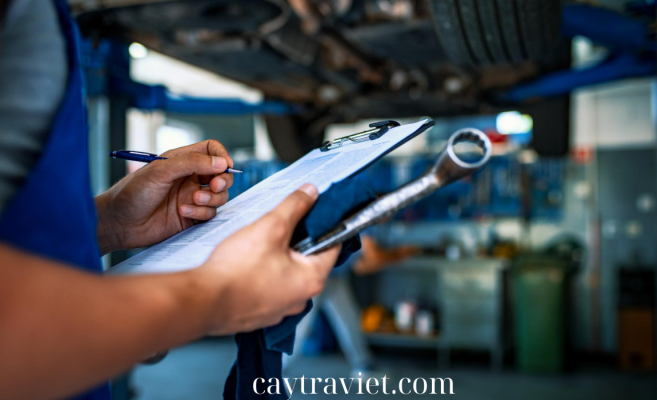Proper car care is crucial to extending the life of your vehicle and ensuring it runs smoothly. Regular maintenance not only prevents costly repairs but also helps avoid unexpected breakdowns. Along with care, knowing basic troubleshooting techniques can help you identify and resolve common issues before they become serious problems.
In this guide, we’ll cover key car care and troubleshooting tips to keep your vehicle in top condition, whether you’re a seasoned driver or a new car owner.
1. Regular Oil Changes
One of the most important aspects of car care is regular oil changes. The engine oil lubricates and protects the engine’s components, preventing overheating and wear.
- Why it matters: Old or dirty oil can cause your engine to overheat, leading to engine damage. Changing the oil at regular intervals ensures your engine remains properly lubricated.
- How often: Most manufacturers recommend changing your oil every 5,000 to 7,500 miles, but check your owner’s manual for specific guidelines.
Troubleshooting tip: If you notice your engine running hotter than usual or hear unusual noises, check the oil level and top it off if necessary. If the oil looks dark and dirty, it’s time for a change.
2. Tire Maintenance and Rotation
Tires play a crucial role in your car’s performance and safety, making tire care a priority for any car owner.
- Tire pressure: Keep your tires inflated to the manufacturer’s recommended levels. Underinflated tires can reduce fuel efficiency and increase the risk of blowouts, while overinflated tires can cause uneven wear.
- Tire rotation: Regular tire rotations ensure even wear across all four tires, extending their lifespan. Rotate your tires every 5,000 to 7,500 miles or as recommended in your car’s manual.
Troubleshooting tip: If you notice uneven tread wear or feel vibrations while driving, it may indicate a tire imbalance or alignment issue. Check the tire pressure and inspect the tread for signs of wear.
3. Brake Care and Inspection
Brakes are a critical component of vehicle safety, and regular brake maintenance is essential for avoiding accidents and costly repairs.
- Brake pads: The brake pads should be checked regularly for wear. If you hear squeaking or grinding when applying the brakes, it’s a sign that the pads may need to be replaced.
- Brake fluid: Low brake fluid can cause your brakes to feel spongy or unresponsive. Check the brake fluid levels regularly and top them off if needed.
Troubleshooting tip: If your car pulls to one side when braking, or you notice a burning smell after using the brakes, it’s time to have them inspected by a professional.
4. Battery Care and Troubleshooting
A dead battery is one of the most common reasons for a car not starting. Proper battery care helps avoid getting stranded unexpectedly.
- Battery terminals: Check the battery terminals for corrosion and clean them regularly. Corrosion can prevent the battery from delivering power to the engine.
- Battery charge: If your battery is more than three years old, have it tested to ensure it holds a charge. Replace it if necessary to avoid sudden failure.
Troubleshooting tip: If your car struggles to start, or the dashboard lights flicker when turning the key, it may indicate a weak battery. Use a multimeter to check the battery’s voltage or visit a mechanic for a test.
5. Coolant System Maintenance
The coolant system keeps your engine from overheating, so maintaining proper coolant levels is essential to prevent damage.
- Coolant level: Check the coolant level regularly and top it off if necessary. The coolant reservoir should be at the recommended level, especially before long trips or during hot weather.
- Coolant flush: Over time, the coolant can become contaminated and lose its effectiveness. Flushing the coolant system every 30,000 miles helps remove any debris and keeps your engine running cool.
Troubleshooting tip: If you notice your engine temperature gauge climbing or see steam coming from under the hood, pull over immediately and check the coolant level once the engine has cooled. Low coolant levels can cause the engine to overheat.
6. Transmission Maintenance
Transmission problems can be costly to fix, so regular maintenance is key to keeping it in good working order.
- Transmission fluid: Check the transmission fluid regularly to ensure it’s at the right level and doesn’t look burnt or dirty. Low or contaminated transmission fluid can cause shifting problems and damage the transmission.
- Signs of trouble: If you notice delayed shifts, slipping gears, or strange noises when shifting, it could be a sign of transmission issues.
Troubleshooting tip: If your car is struggling to shift or making unusual noises, have the transmission inspected by a mechanic as soon as possible to avoid more serious problems.
7. Lights and Electrical Systems
Keeping your vehicle’s lights and electrical systems in top shape is essential for safety and visibility on the road.
- Headlights and taillights: Check that all your lights, including headlights, taillights, and brake lights, are functioning properly. Replace any burnt-out bulbs immediately.
- Fuses: If multiple electrical systems (e.g., lights, radio, power windows) stop working, check the car’s fuses. A blown fuse is often the cause of electrical problems and can be easily replaced.
Troubleshooting tip: If your lights are dimming or flickering, it could indicate an issue with your alternator. Have it checked if the problem persists.
Conclusion: Keep Your Car Running Smoothly with Regular Care
By following these car care and troubleshooting tips, you can extend the life of your vehicle, improve its performance, and avoid unexpected repairs. Regular maintenance and early detection of issues are the keys to ensuring that your car remains reliable and safe on the road.
Whether you’re performing routine maintenance or troubleshooting a problem, taking the time to care for your car can save you money and stress in the long run.



